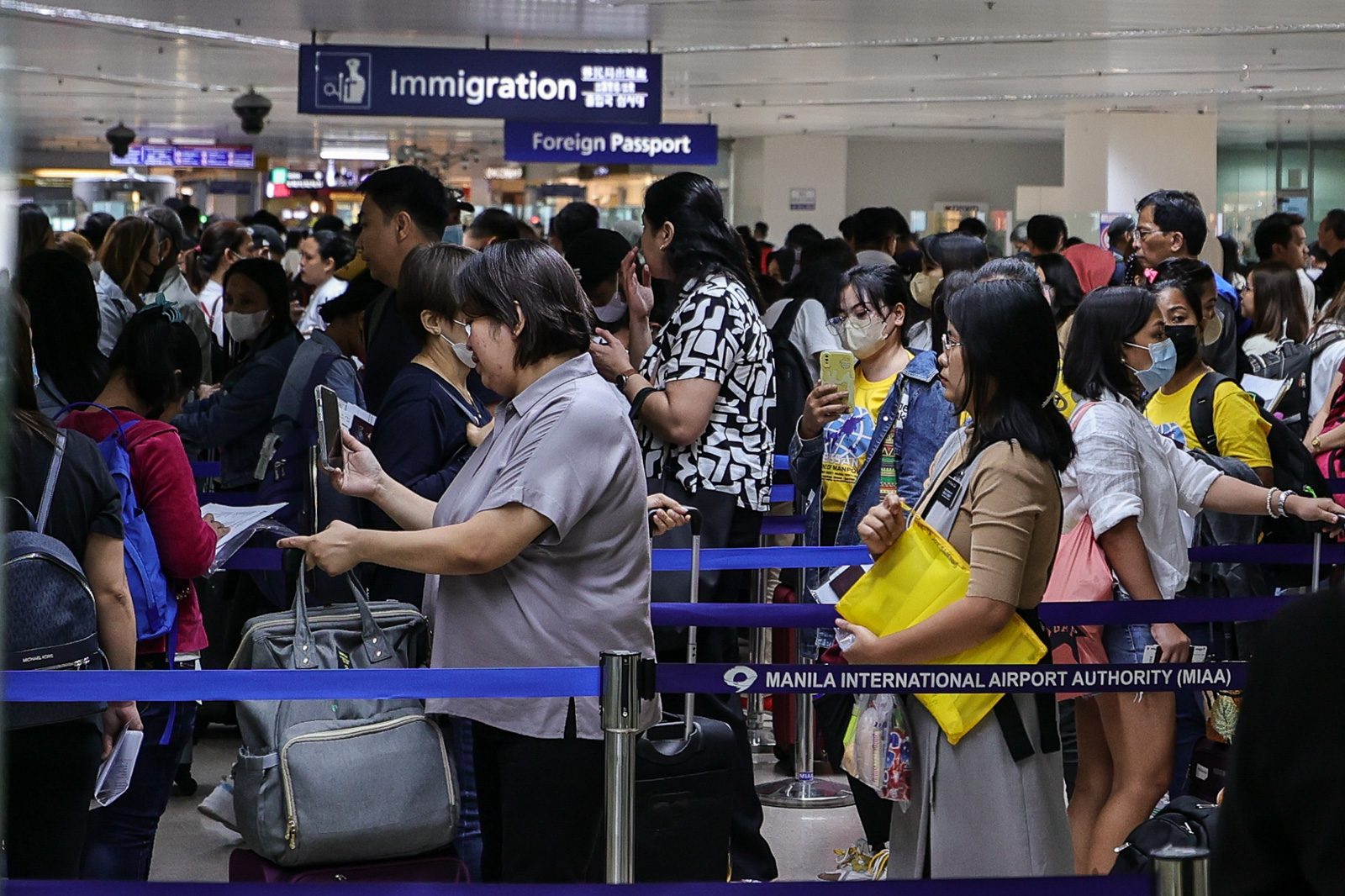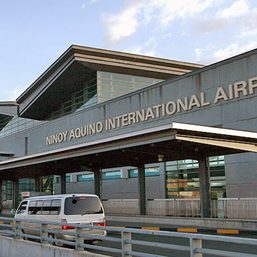SUMMARY
This is AI generated summarization, which may have errors. For context, always refer to the full article.

MANILA, Philippines – Hardly a day goes by without a passenger recounting how one airline or another spoiled his or her trip. Whether it’s netizens flagging seemingly “arbitrary” cancellations or a lawmaker calling for the suspension of Cebu Pacific’s franchise because of his wife’s three-hour flight delay, airlines have found themselves grabbing headlines for all the wrong reasons.
Cebu Pacific, for instance, admitted that its on-time performance recently sank to just 50% to 60%. Philippine Airlines (PAL) also experienced several canceled flights due to “aircraft situation.” For the average traveler, these airport nightmares may mean a vacation ruined or an important life event missed.
What causes these flight disruptions in the first place, and why do they seem to be getting more frequent?
Rappler spoke with stakeholders in the aviation industry – the head of the Manila International Airport Authority (MIAA), the chief executive officer of an airline, and an undersecretary of the Department of Transportation (DOTr) – to get to the bottom of the issue.
Many of the delays and sudden flight cancellations can’t be pinned down to just one cause. Instead, what happens is that one disruption – caused perhaps by a damaged plane, rundown runway, or stormy weather – leads to consequential delays. And when you have one delay in an already congested airport, that can snowball into flights being affected even the next day.
“I’ve never known a situation where it’s been so difficult to keep the aircraft in the air,” said Michael Szucs, chief executive officer of Cebu Pacific, the budget airline that has found itself at the center of a Senate inquiry.
“We’ve got, obviously, the engine issues. We’ve also been hit by some very, very strange ground damage related incidents. And then, of course, we’ve got the red lightning alerts, which, I think, is [because] the world’s getting warmer,” he told Rappler during a trip to China to bring home a new plane for Cebu Pacific.
With so many possible causes, where do flight disruptions usually come from? Recently, they start with lightning lighting up the skies.
Rise of red lightning alerts
For the first three months of the year, no red lightning alerts were raised over at the Ninoy Aquino International Airport (NAIA). Then, as the rainy season approached, thunderstorms began to roar overhead the country’s main gateway.

According to data from MIAA, no red lightning alerts were raised in the first three months of 2023. After, the alerts jumped dramatically, with 52 red lightning alerts issued from April to June 2023. MIAA declares these when a lightning strike is recorded within a five-kilometer zone from the center of the airport. During this time, all flight and ground activity at NAIA are temporarily suspended for the safety of passengers and groundhandlers.
The column chart below shows lightning alerts raised from October 1, 2022 to June 30, 2023 based on data given by MIAA to Rappler. The height of the column represents the duration of the lightning alerts in minutes.
In its ramp area, NAIA has four lightning shelters and 20 lightning arresters, which are designed to redirect lightning surges onto the ground. Still, accidents can happen. In 2014, a lightning strike that hit a plane being serviced in NAIA Terminal 3 left a mechanic in critical condition.
“You have to protect the ground personnel because previously, for the past few years, may mga na-aksidente na tayo diyan (some people already got into accidents),” MIAA officer-in-charge Bryan Co told Rappler on Friday, July 7.
“May mga nakidlatan na, may namatay na, may na-injured, ‘di ba (Some already got hit by lightning, some died, and some were injured). And it’s not a local thing. It’s done worldwide.”
When operations stop at an airport, where every minute counts, chaos can ensue. Co said that when a red lightning alert lasts for thirty minutes to an hour, airlines just need a few hours to catch up on their schedule. But when a red lightning alert lasts for three hours, it may take them a day to normalize their schedule. With NAIA processing an average of 42 arrivals and departures per hour, that means having a backlog of more than 120 flights.
Co explained that airlines may cancel flights as a “strategy” to limit the number of passengers being disrupted overall. Rather than attempt to catch up on missed flights and cause more disruptions the next day, they may just cancel them altogether.
“Kaya minsan, kina-cancel na lang nila (That’s why sometimes, they just cancel it). It’s just to save it. Tapusin na (Let’s just finish this). Let’s call it a day. Just cancel para the next day we can protect our schedules again,” Co said.
“Imbes na you affected 5,000 passengers, na-limit mo na lang, na-cancel mo around 800 passengers (Instead of affecting 5,000 passengers, you can limit it and just cancel flights affecting 800 passengers). But at least the next day, you’re operating the normal schedule again,” he added.
But some in the airline industry fear red lightning alerts may become more frequent due to climate change.
“It’s no question that the world is getting hotter, and Manila is now suffering red lightning alerts almost every day. These close the airport operations in Manila for anything up to three hours a day,” said Cebu Pacific’s Szucs, who himself recently suffered an eight-hour flight delay stemming from a red lightning alert at NAIA.
“Given we have almost 50 aircraft, the impact on the day itself and on the following day is always massive. So the base carriers there – ourselves, Philippine Airlines, Philippines AirAsia – all have a very large impact due to the red lightning alerts,” Szucs said.
Transportation Undersecretary for Aviation Roberto Lim also agreed that red lightning alerts have become “more unpredictable and frequent due to climate change.” He told reporters that under the Air Passenger Bill of Rights, airlines are not required to reimburse passengers for cancellations due to fortuitous events, like bad weather. Still, airlines have provided “amenities” for those affected.
“Airlines have taken that step of being more relaxed with respect to their individual airline policies because we’re experiencing too often and too many of these red lightning alerts. They used to happen intermittently, but in the past two months, it’s been regular,” Lim said on July 4.
Rappler has requested data from MIAA regarding red lightning alerts and flight disruptions. This story will be updated once the data is provided.
Engine problems, delayed repairs
All that said, weather-related disturbances are just one of the problems besetting the aviation industry. MIAA officer-in-charge Bryan Co estimated that at the most, red lightning alerts account for around 10% of disruptions at any given day. The other major cause of flight cancellations is the issue of aircraft availability.

Airlines sometimes sell flights up to a year ahead of schedule. But this year, engine problems and delays with manufacturers have shattered these meticulously planned schedules.
For instance, about 17% of Cebu Pacific’s operating fleet is currently unavailable, and at one point, nine of the airline’s long-term aircraft were grounded in a span of six to eight weeks. (READ: Airlines blame spare parts shortage, maintenance woes for canceled flights)
Both Cebu Pacific and PAL have several grounded Airbus NEO aircraft using Pratt & Whitney engines, which have recently faced supply chain and repair issues. Around the world, more than 120 airplanes powered by Pratt & Whitney engines are grounded – bad enough to drive one airline to file for bankruptcy.
Cebu Pacific explained that these Pratt & Whitney engines had to come off the wing more than twice as early as expected, causing a backlog in maintenance and repair shops. The average time for overhaul, which should be 90 to 100 days, has more than doubled to 220 to 240 days.
“There’s not enough spare engines available at the moment to supply to us, and indeed all the other customers around the world where they’ve got massive problems,” Cebu Pacific’s CEO said, estimating that the “engine situation” with Pratt & Whitney may take up to 18 months to resolve.
As of press time, Pratt & Whitney has not responded to a request for comment.
The largest suppliers of parts and components in the aviation industry – Sabena, Air France, and Airbus – are also encountering supply chain issues and have delayed their deliveries to airlines.
Aside from these engine and parts issues, Cebu Pacific’s CEO also cited the “impact of strange incidents beyond normal wear-and-tear of an aircraft that requires regular maintenance.” For instance, a maintenance provider had punctured the skin of one of their planes, sending that plane out for eight months. In another incident, “sudden, exceptionally strong winds” were said to have blown a ramp onto another aircraft, grounding that plane for at least six months.
When the budget airline didn’t have enough standby aircraft available to take the place of the grounded planes, it had to cancel some flights.
Congestion, poor infrastructure
With talks of NAIA’s impending privatization and rehabilitation come discussions of the airport’s ailing infrastructure. Currently, NAIA is operating far above its maximum declared annual capacity of 31 million passengers. In 2019, before pandemic restrictions clamped down on air travel, NAIA already handled more than 48 million passengers a year. By 2028, it’s projected that more than 55 million passengers would be passing through the country’s main airport.
As travel begins to normalize and passenger volume exceeds pre-pandemic levels, NAIA threatens to become more congested than ever.
“Dati, hindi natin napapansin kasi ilan lang naman ang flights. Hindi naman tayo nakapag-750 to 770 flights a day. So kung nagka-delay ka, due to a red alert dati, you can still have another gate kasi wala kang gumagamit diyan. But ngayon na talagang congested na tayo, each and every delay, may kapalit na dapat na eroplano puwedeng hindi nakaalis,” MIAA officer-in-charge Bryan Co told Rappler.
(In the past, we don’t notice these delays as much because we didn’t have as many flights. We don’t reach 750 to 770 flights a day. So if you get a delay due to a red lightning alert before, you can still have another gate which isn’t used. But now that we’re really congested, each and every delay comes with a plane that should have left, but didn’t.)
“Nawawalan tayo ng (We lose) elbow room to navigate these irregular operations because we’re just too congested,” Co said. “We have to operate like clockwork. Sakto lahat kasi (Everything has to be exact because) we’re designed for 32 million but we’re operating at 47.”

There are also cases where NAIA’s state of disrepair has caused direct damage to aircraft. Cebu Pacific’s Flight 5J 19 from Dubai to Manila had to be grounded on May 26 due to “poor runway conditions.” When it landed in NAIA, one of its main wheels shattered, ruining the wheel and causing a $1.7-million damage to a wing flap, which was dented. This also put the plane out of service for a month.
Regional airports have problems too. On May 22, the runway threshold lights at the Bacolod airport broke down, stopping night operations. This forced four flights to be canceled, affecting about 1,400 passengers, with ripple effects even the following day.
Smaller airports may also not be equipped with facilities that allow planes to take off and land when the sun goes down. Out of the 90 airports in the Philippines listed by the Civil Aviation Authority of the Philippines (CAAP), only 23 are night-capable. This means if there are any delays to flights involving these sunset-limited airports, these flights may be pushed to the next day or canceled altogether.
A document obtained by Rappler from CAAP showed that even if these 23 airports were night-rated, it didn’t mean that their hours of operation ran round the clock. Some, like the Tuguegarao Airport and Cotabato Airport, are capable of handling only departing night flights.
The map below shows where the different night-rated airports are located in the Philippines. Hover over each icon to view more details, such as the airport’s hours of operation.
What about overbooking?
When disruptions began hitting local carriers, netizens wondered whether some of the “arbitrary” flight cancellations were related to overbooking. The Senate probe into the issue also focused on allegations that airlines were overbooking flights.
Civil Aeronautics Board (CAB) executive director Carmelo Arcilla admitted that airlines actually have no limit to the number of passengers they can overbook per flight. However, he said that there was an “effective counterweight” to discourage abusive overbooking because carriers were required to pay affected passengers for any inconvenience caused by overbooking.
Cebu Pacific has denied that the increase in flight disruptions is related to excessive overbooking. While the budget airline practiced overbooking in some flights, which is an industry norm, it followed the procedures outlined in the Air Passenger Bill of Rights.
The Gokongwei-owned carrier said that this perception of overbooking could stem from “equipment changes” for flights. Because of months-long delivery delays from aircraft manufacturers, there were instances in which a larger plane that was supposed to be used in a flight was not yet delivered, forcing the flight to switch to a smaller plane.
When this downgrade to an aircraft with smaller capacity happens, not all passengers are carried over. Vulnerable passengers – persons with disabilities, pregnant women, senior citizens, and families with infants – are given priority. After that, the rest of the passengers to be carried over are picked at random by the system.
As a result, some passengers experience a canceled flight while others who booked the same flight continue on their way, leading passengers to think the flight was overbooked, according to Cebu Pacific.
The DOTr has also denied that overbooking was behind the cause of the surge in flight cancellations, pointing instead to the rise of red lightning alerts.
“Overbooking is not the issue here. Flights are canceled because there are red lightning [alerts]. That's the problem. It just disrupts the operation of a pre-existing congested airport,” Undersecretary Lim said.
What has been done to cope?
In the short-term, the DOTr and airlines have been working to reduce flights and increase fleet availability.
Both Cebu Pacific and Philippine Airlines said they had reduced their flight schedules to allow for standby planes to pick up the slack in case of sudden cancellations.
“Ang naging (The) solution would be, you fly a schedule that you can support,” Co told Rappler, explaining that they used a formula to determine the number of flights per day depending on the flight hours per day and the aircraft type.
“Sila na ‘yung voluntary na nagsabi (They voluntarily said), ‘Okay, we're canceling these flights. We're doing this reduction in our network schedule,’” he added.

Co said that they’ve now seen a “very big improvement” in the performance of the airlines, which has an on-time performance between 70% to 75% after bottoming out at around 50% earlier in the year.
Meanwhile, AirAsia said it “was not amongst the local carriers asked by the regulators to reduce frequencies as we have been compliant with our on-time performance and have effectively managed flight disruptions,” the airline’s spokesperson Steve Dailisan told Rappler.
AirAsia, however, also faced a similar problem in December 2022 when its on-time performance sank to around 50%. Co said that he then asked AirAsia to reduce its flight hours from 14 hours a day to just 10 to 11 hours a day, which allowed it to improve its performance.
Aside from reducing flight schedules, MIAA also urged airlines to keep more standby aircraft. Co said that right now, airlines are asked to apply a ratio of 1 is to 10 – for every 10 planes that have a full schedule, there has to be one backup plane on standby in the airport.
Cebu Pacific is attempting to comply, committing to have six standby aircraft by December 2023. It’s also set to acquire at least five additional aircraft, along with a number of short-term leases. PAL is also looking to bolster its fleet with an additional A321CEO, two lease arrangements, and at least nine new aircraft purchases down the line.
In the long term, the government is looking to build more night-capable airports and improve existing ones. Transportation Undersecretary Lim said that the DOTr and CAAP have invested in making several airports night-capable. A document obtained by Rappler from CAAP showed that six airports – in Basco, Busuanga, Calbayog, Catarman, Siargao, and Tawi-tawi – were recommended to be made night-rated.
The map below shows where future night-rated airports may be located in the Philippines. Hover over each icon to view more details, such as the airport's hours of operation.
“We have night-capable airports. We should use more of them. I think the riding public wouldn't mind traveling at 1 o'clock in the morning or 5 o'clock in the morning. We're a young country, young nation. We don't mind traveling in the evening as long as we arrive on time,” Lim said.
The government also has big plans to fix up NAIA – either through a solicited proposal or an unsolicited proposal led by the country’s biggest conglomerates. Both routes would entail investing hundreds of billions and letting the private sector run the airport for up to 25 years.
But until all these plans are met, airlines continue to grapple with disruptions, and passengers suffer for it. Blasted by the public for the rise in flight cancellations, Cebu Pacific admitted it failed some of its passengers and could have responded better.
“Whilst we've had these sort of unprecedented issues to deal with, we have to accept that we've let customers down,” Cebu Pacific CEO Michael Szucs said.
“We do have to recognize that we probably could have communicated it better. And I think we could probably consider how better could we look after the interest of the passengers that were affected. But there was no way that we could not affect the passengers, because the scale of the cutbacks that we needed to do, given the reduction in our fleet, was just so large,” he added.
– Rappler.com
Add a comment
How does this make you feel?
![[EDITORIAL] Panagutin ang mga airline, hindi na puwedeng sorry na lang!](https://www.rappler.com/tachyon/2023/06/animated-airline-woes-carousel.jpg?fit=449%2C449)



![[OPINION] Clark International Airport, one of world’s most beautiful airports, is badly underutilized](https://www.rappler.com/tachyon/2024/05/clark-airport-underutilized-may-28-2024.jpg?resize=257%2C257&crop=560px%2C0px%2C720px%2C720px)




There are no comments yet. Add your comment to start the conversation.